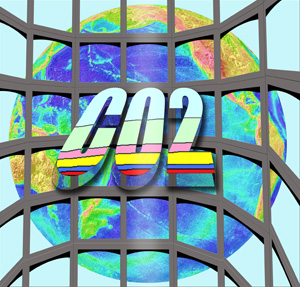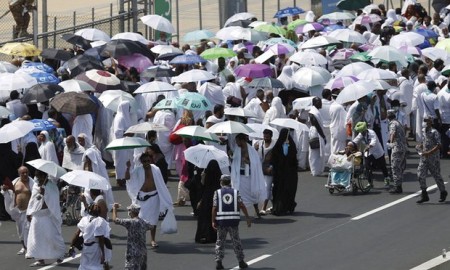May 23, 2016 – Climatologists that study paleo climates think in terms of tens of thousands of years. But now in the 21st century it has become easy to track climate changes in increments that amount to a mere couple of decades. That is a remarkable finding of the National Oceanic Atmospheric Administration (NOAA) in its 10th Annual Greenhouse Gas Index report.
The year 2015 alone produced a 3 parts per million (ppm) increase in atmospheric carbon dioxide (CO2). Those paleo climatologists will tell you this is remarkable. Why? Because from the end of the most recent Ice Age to the advent of the Industrial Revolution, atmospheric CO2 remained around 278 ppm. With no other physical changes that could account for a CO2 rise, that number has now reached on average 400 ppm.
Director of NOAA’s Global Monitoring Division, Jim Butler, states, “We’re dialing up Earth’s thermostat in a way that will lock more heat into the ocean and atmosphere for thousands of years.” The numbers quoted in the annual report are not based on climate modeling. They are the real deal. Butler states, “these are precise and accurate measurements, and they tell us about how humans are changing the balance of heat in the Earth system.”
From 2014 to 2015 the annual greenhouse gas increases equaled 1.8% relative to 1990 levels. This has been a steady state rate of increase since about 1950. That rate includes more than CO2 which contributes more than 82% of all human generated greenhouse gases. The rest come from non-CO2 greenhouse gases which include methane (CH4), nitrous oxide (N2O) and 15 minor halogenated gases. Halogenated gases are the chlorofluorocarbons that were first identified as ozone depleting threats leading to the first cap and trade agreement to minimize these greenhouse gases.
It should be noted that of the identified greenhouse gases that contribute 96% of the atmospheric warming, CO2 and N2O have continued to grow at a pretty steady state. CH4 on the other hand has seen a jump from 2007 to 2015 after remaining constant from 1999 to 2006. That jump can be attributed to a number of causes, one of which is fracking, and the other, melting of permafrost.
For those who question NOAA data, it is gathered from atmospheric observation sites around the world with precise accuracy. There is very little uncertainty in its reporting. So if you are a climate change skeptic who believes that humans have nothing to do with global warming, you need to recognize that the Earth is undergoing an unprecedented change in a rather short period of time because the data doesn’t lie. And you also need to recognize that at current rates of increase of 1.8% per year the median atmospheric temperature of our planet is headed not for a 2 Celsius (3.6 Fahrenheit) increase, but one that will easily exceed 3 Celsius (5.4 Fahrenheit) by 2050.
Without understating the implications of a world warmer by 3 Celsius let me point out a headline that appeared today. In Phalodi, a town in Rajasthan, in western India, a new record high temperature was recorded, 51 Celsius (123.8 Fahrenheit). The town has experienced a heat wave that has exceeded 40 Celsius (104 Fahrenheit) for weeks. Deadly heat waves like this have become common in India. The conditions have made it difficult for citizens going about daily activities.
And consider the impact of rising temperatures in another hot spot on the planet, the Middle East and North Africa. Average temperatures have been climbing with extreme heat days doubling since 1970. Today the number is 16 days. By mid century the number will be 80. And by the end of the century it will rise to 118. Today 500 million people live in the area that will be affected. With temperature trends showing this inevitable outcome it means entire sections of this region will become uninhabitable. Now these predictions come from 26 different climate models that coincidentally project similar outcomes. That’s a frightening fact that even the most skeptical climate change deniers would have trouble reconciling. I can tell you that the pilgrims seen in the picture below on the road to Mina, near Mecca in Saudi Arabia, can attest to the change and umbrellas alone may not shield them from the future heat.











